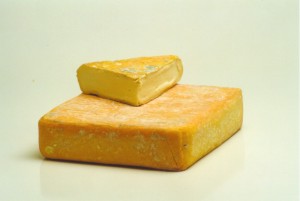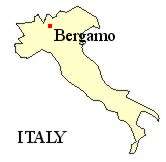 |
|
|||||
The name Taleggio is taken from the area where this cheese was first made, Val Taleggio in Bergamo. Originally the cheese was made in the mountains but its production has spread from the Alpine regions to large areas of the Po valley. The making of Taleggio is believed to go back to the tenth or eleventh century, with the first documents mentioning the cheese, along with grana, in the year 1200. However, until the early 1900's it was simply called 'stracchino': a name which is still used, especially in Lombardy, and which defines not so much a specific cheese, as the large family of soft, square-shaped cheeses very popular in the region. The origin of the generic term 'stracchino' relates to the Lombard dialect word 'stracch' which means tired or exhausted. It relates to the condition of the herd upon finally reaching the plain after their long stay on the Alpine pastures. The cows, although worn out by the long journey, were still able to produce milk fit for making cheese, and this cheese they called stracchino. The cheese-makers of the Taleggio valley felt they wanted to differentiate their valuable cheese from the others in the area, but it wasn't until 1955 that the methods of making Taleggio gained some protection. A controlling body was introduced and it ensured the quality of Taleggio, but is wasn't until 15 September 1988 that Taleggio was granted the ultimate accolade, a Presidential Decree. This put it along side other famous Italian cheeses such as Gorgonzola and Parmiggiano Reggiano. The areas in which Taleggio can be made are restricted to the provinces of Bergamo, Brescia, Como, Cremona and Milan in Lombardy; the province of Treviso in Veneto and Novara in Piedmont. The producers association for the protection of Taleggio cheese, formed by the major producers in March 1979 sees that all the regulations are applied. Our Taleggio is made in a small creamery and is faithful to the age-long traditions. Full cream pasteurised cows' milk is heated in a cauldron to a temperature of 30-36ºC. A lactic starter culture is added to cause the milk to sour, followed by calf rennet which causes the milk to coagulate and produce the curds. These curds are then broken and placed into moulds which are then put into special warm rooms with a high humidity, for 18 hours. This operation is very important since it is in this phase that a fermentation takes place, and it is this which produces the springy texture of Taleggio. The cheeses are then soaked in a brine bath and matured for 25 to 50 days at a temperature between 3 and 8ºC and a humidity of 85-90%. Such conditions are characteristic of the 'Casere', the natural caves that can be found in the Valsassina and used for centuries for the maturing of cheese; in a similar way to the Roquefort cheese in the caves of 'Les Causses'. Each cheese is square shaped with sides measuring 20 to 25cm and has a thickness of 5 to 7cm, weighs 2kg and has a fat content of 48%. The rind is soft and thin with a rosy light-brown colour and often covered with irregular spots of greyish mould. The paste is soft, slightly stringy and straw-yellow in colour under the crust; and a little firmer, crumbly and white coloured towards the centre. The fragrance is unique and aromatic, and when mature it can become pungent. The taste is sweet, delicate, slightly sourish and sometimes tangy. The cheese is easily digested; this is attributed to the moulds on the crust. Taleggio is excellent for the cheese board and also for cooking. When sliced and added to the top of hot dishes it melts into an appetising cream. Wine to accompany Taleggio would be a young lighter red. One can also try wines from the area of Taleggio such as Franciacorta Rosso, Oltrepo Pavese, Pinot Nero, Piave Merlot and Rosso Piceno. Click here or press your 'Back' button to return |
|
|||||
| All articles © www.teddingtoncheese.co.uk | ||||||
